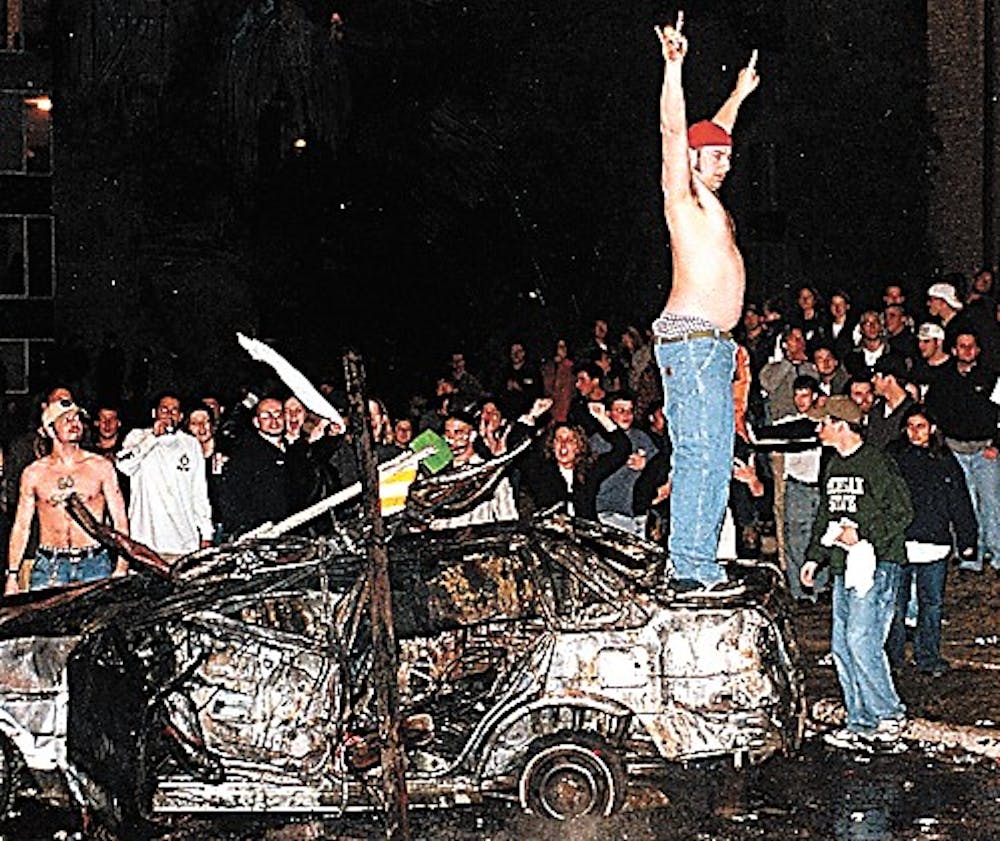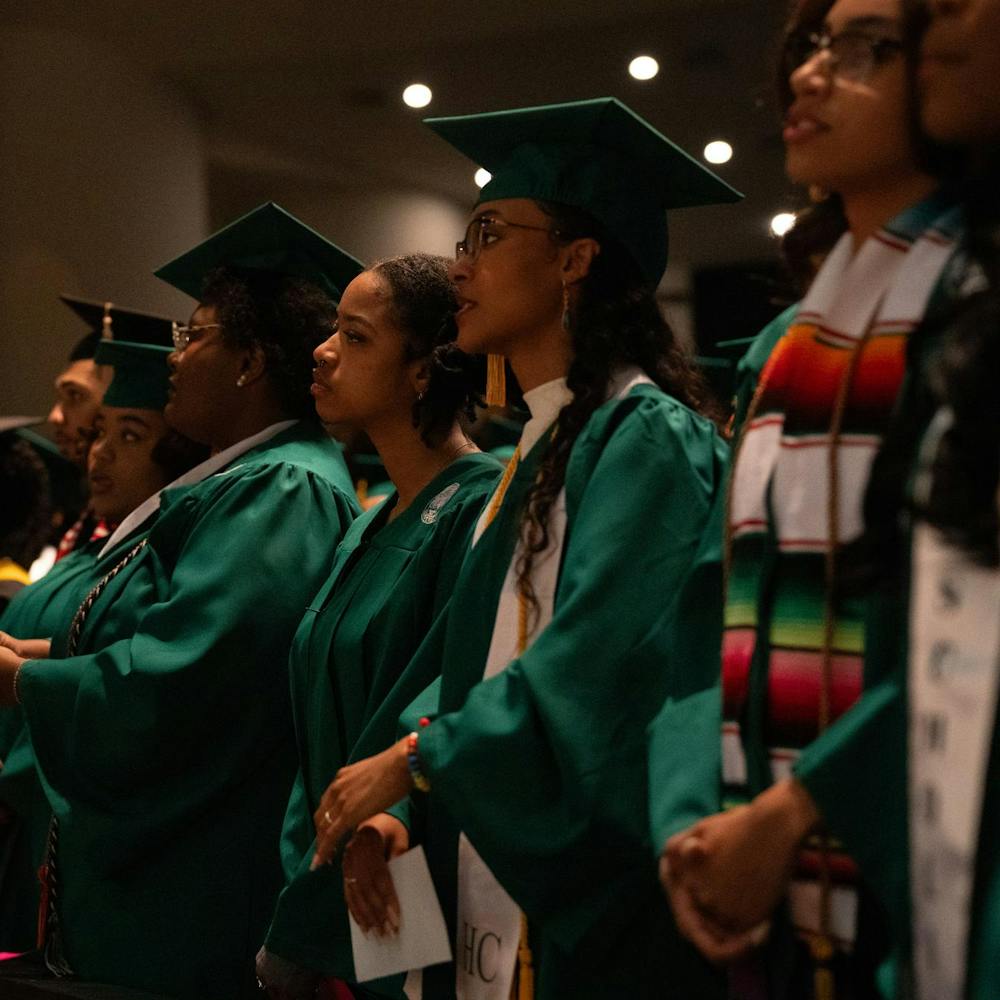For about 20 years, sport losses and victories have carried the potential for riots at MSU. East Lansing Mayor Mark Meadows’ career has been defined by the riots and his response to them.
“As mayor, I may have been involved with more disturbances like riots than any other mayor in history,” Meadows said. “It’s been a real rollercoaster ride in many respects.”
When the first riots Meadows recalls broke out in 1996, police and city officials were taken by surprise.
“The first real disturbance that we saw in the downtown was when the university closed Munn Field to alcohol, and so there was a demonstration regarding that that spilled over onto the corner of Grand River and Abbot and just got out of hand,” Meadows said. “We didn’t really know what to do with it.”
A year later, students rioted on Gunson Street after the police tried to crack down on alcohol use and house parties. The windshields of two police cars were broken, and MSU saw its first couch burning.
“Several people at the disturbance said the street party began when students from different houses in the area gathered on Gunson to watch a student who was break-dancing in the street. The bonfire was started when a partier brought out a couch ‘to watch them dance,’” a Sept. 8, 1997 State News article reads. “Soon after, the partier decided to set it on fire.”
City officials worried the disturbances would continue after the Gunson Street riot, Meadows said. Then, in 1999, MSU lost to Duke in the NCAA Tournament. The resulting riots made it clear that the problem wouldn’t go away on its own.
“That riot in particular seemed to be planned,” Meadows said. “People were bringing scrap wood and things like that into the city for at least a week before the event, and there were huge fires that developed.”
Police briefs from March 30, 1999 reported damaged light posts, traffic signals and trees, windows broken in the Union and parking ramps, and a door to the Natural Sciences Building was “destroyed.” One East Lansing resident described the city as a “war zone,” according to a March 30, 1999 State News article.
Wood, a dumpster, a propane tank, couches and other furniture were burned before police broke up the gatherings of about 7,000 people using tear gas. Several cars, including police cruisers, were disassembled or burned by rioters. After a similar disturbance followed MSU’s loss to Texas in the 2003 NCAA Tournament in which police used more than 135 canisters of tear gas to dispel about 2,000 rioters, Meadows said the city began to work to combat the riots by including students and other members of the East Lansing community in the process.
“I thought that we needed to do something to really address this issue, so I created (the Mayor’s Riot Commission) that had members of the university and the police department, ASMSU and other student organizations, other neighborhood organizations,” Meadows said. “It issued a report with a series of recommendations — which I think were all ultimately implemented — as to how we should address these types of issues.”
Since the recommendations of the commission were adopted in 2006, East Lansing has had “some little conflagrations,” but no major riots, Meadows said. Riots in 2013 and 2015 caused thousands of dollars’ worth of damage and many participants were arrested, but no tear gas was used to disperse the crowds.
Though the Mayor’s Riot Commission disbanded after it released its report, a celebrations committee was created to keep track of the city’s preparedness for and response to events of this nature. Meadows credited the committee with positive changes in policing, including the limited use of tear gas.
After MSU’s loss to UNC in the 2005 NCAA Tournament, crowd control methods may have exacerbated the riots, Meadows said. Some rioters and spectators were prevented from leaving, which made the situation “even worse.”
“We don’t do things the same way as we used to,” Meadows said.







